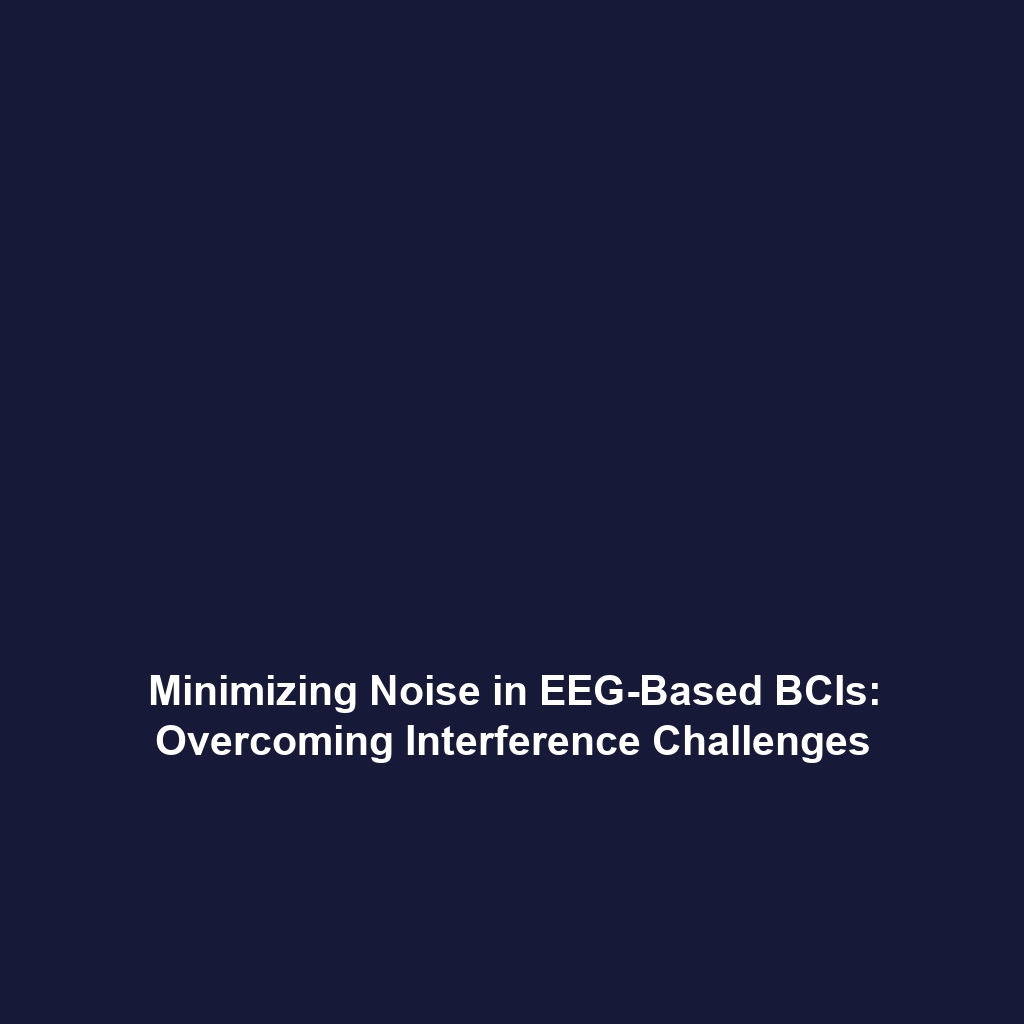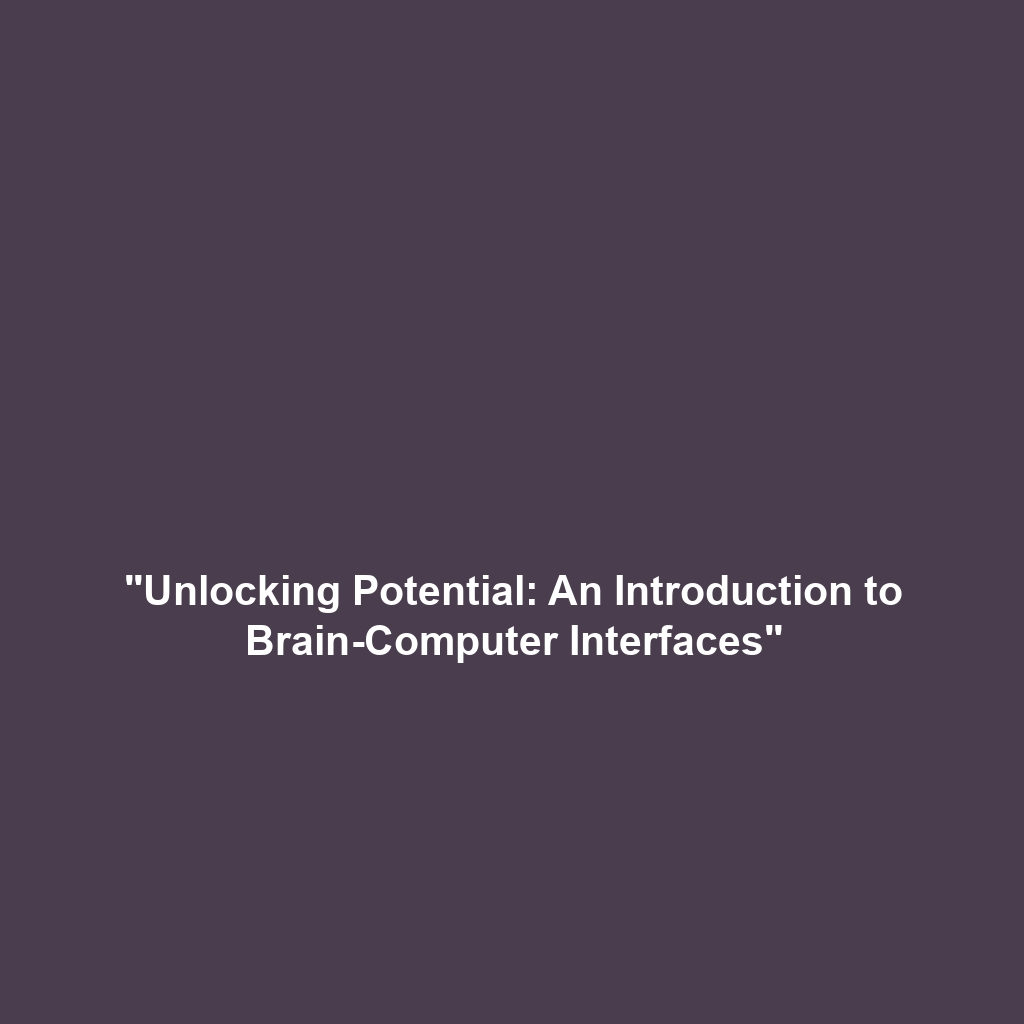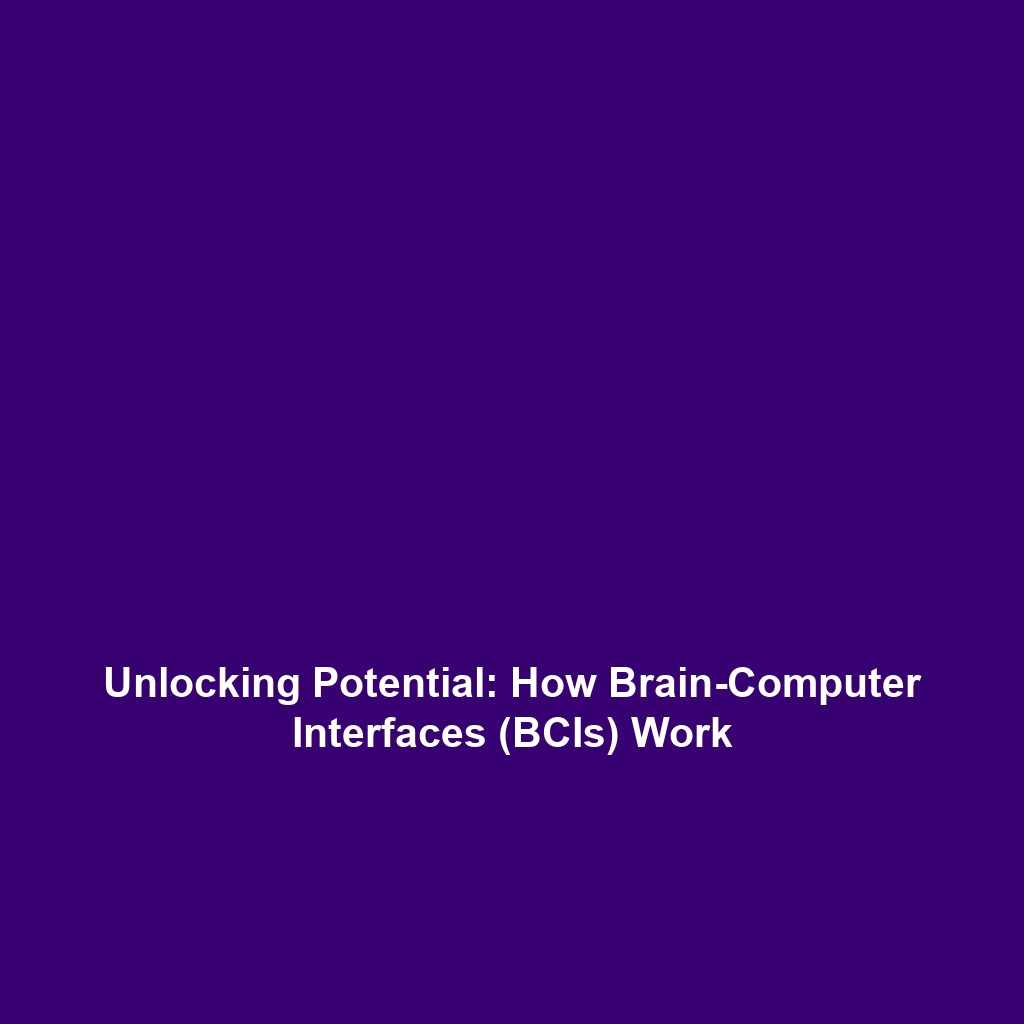Understanding Noise and Artifacts in Non-Invasive Brain-Computer Interfaces
Introduction
Brain-Computer Interfaces (BCIs) represent a revolutionary approach to direct communication between the brain and external devices. However, non-invasive BCIs, particularly those utilizing electroencephalography (EEG), face significant challenges arising from noise interference and physiological artifacts. These disturbances can substantially reduce the accuracy and reliability of BCI signals, impeding their practical applications. This article delves into the significance of these issues, providing insights on how noise and artifacts affect the performance of BCIs and exploring avenues for improvement.
Key Concepts
The study of noise and artifacts in non-invasive BCIs is crucial for enhancing their effectiveness. Key concepts include:
Noise Interference
Noise can stem from various external sources, including electromagnetic interference, ambient sound, and even nearby electronic devices. For non-invasive BCIs to be effective, it is essential to minimize these disturbances.
Physiological Artifacts
Physiological factors, such as eye blinks, muscle movements, and heartbeats, can introduce artifacts into EEG data. These artifacts obscure the brain signals that BCIs aim to interpret, leading to inaccurate outcomes.
Importance of Accuracy
Accuracy in signal interpretation is paramount for the success of Brain-Computer Interfaces, impacting their usability in various applications such as rehabilitation, gaming, and communication assistance.
Applications and Real-World Uses
Non-invasive BCIs find applications in numerous fields, illustrating the importance of addressing noise and artifacts:
- Assistive Technology: BCIs are utilized to help individuals with mobility impairments control devices and communicate effectively.
- Neurofeedback: EEG-based BCIs are employed in cognitive training to enhance mental capabilities and focus.
- Gaming: Non-invasive BCIs provide immersive gaming experiences by allowing players to control gameplay using their thoughts.
Current Challenges
Despite advancements, several challenges related to noise and artifacts persist in non-invasive BCIs:
- Signal Calibration: Achieving standardized calibration for accurate readings remains an ongoing issue.
- Data Processing: Current methods for filtering out artifacts are not always effective, leading to compromised signal quality.
- User Variability: Differences in individual physiology can impact the degree of noise and artifacts, complicating consistent application across users.
Future Research and Innovations
Research is ongoing to mitigate the effects of noise and artifacts in non-invasive BCIs. Upcoming innovations include:
- Advanced Filtering Techniques: New algorithms aim to enhance signal processing by effectively isolating brain signals from noise.
- Wearable Technology: Development of next-generation EEG devices with improved sensor technology that minimize external interference.
- Machine Learning: Utilizing AI to predict and compensate for artifacts in real-time, potentially enhancing accuracy dramatically.
Conclusion
Addressing noise and artifacts is critical to the advancement of non-invasive Brain-Computer Interfaces, particularly those based on EEG technology. By improving accuracy and reliability, we can unlock the full potential of BCIs across various applications, from assistive devices to entertainment. Ongoing research and technological innovations hold promise, ensuring that future BCIs will be more effective and accessible. For more details on related topics, explore our articles on BCI Applications and Future Research in BCIs.


